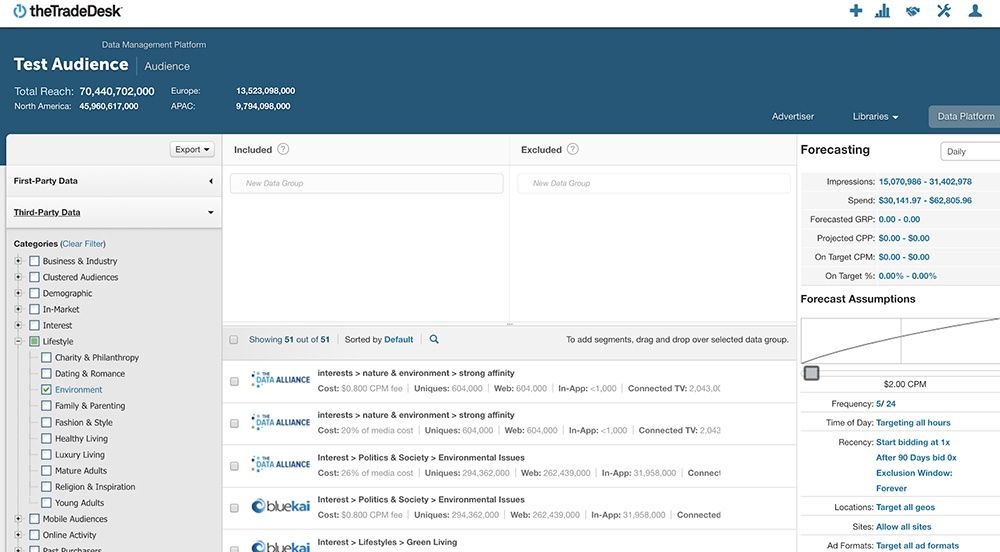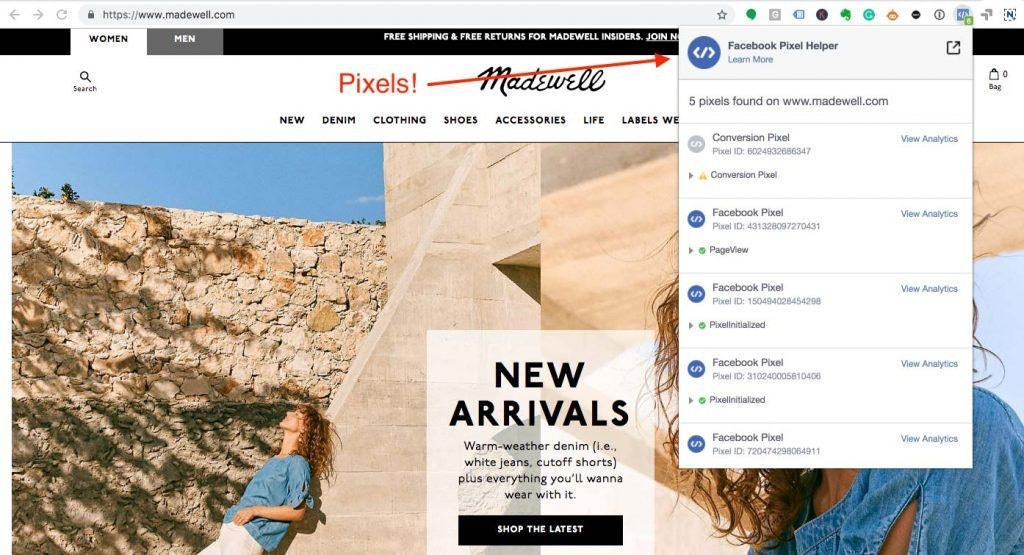Programmatic advertising is a hot topic in the ad world. But honestly, how it is defined and what is or is not “programmatic advertising” is often unclear. Hopefully after reading this post you’ll not only get an understanding of what programmatic advertising actually is, but also learn tips for picking the right marketing partner and for running successful programmatic advertising campaigns.
What is programmatic in digital advertising?
Programmatic advertising refers to buying and selling ad inventory in real time, using an auction-based software rather than manual negotiations. This gives an advertiser the ability to pay for impressions based on the value of the eyeballs viewing their ad instead of a flat CPM across all impressions on a website.
The software sends a bid for the ad view based on the value the advertiser has assigned to a variety of variables such as time of day, device, website, and audience cookie details, among others. This increases both the efficiency of advertising and the accuracy of targeting.
How does programmatic advertising work?
There are countless ways to run programmatic ads. But there are also countless ways to get fooled in the programmatic advertising world.
If you’ve ever taken a dive into the marketing technology landscape supergraphic, you’ve likely noticed how many companies fall under the “display and programmatic advertising” categorization. Many more didn’t make the cut to be on the graphic. And unfortunately, with the broad way these companies often describe their services, it’s super difficult to decipher their differences.
Some of these companies buy programmatically but don’t pass down the cost savings to you by invoicing you on a fixed CPM, some are demand-side platforms, some are supply-side platforms, some are just data science companies that piggyback their data on a demand-side platform, some just run retargeting campaigns, and some just run prospecting campaigns.
It gets messy really quickly.
My advice: start with just one demand-side platform. A true demand-side platform, meaning it is a software tool that does the following:
- Allows you to run campaigns across inventory from multiple ad exchanges (AppNexus, BrightRoll, DoubleClick, etc.)
- Bids by value assignments you’ve given across multiple variables (audience, time of day, creative size, device, etc.)
- Gives you access to a variety of third-party data sources and allows use of first-party data sources in prospecting as well as first-party data sources for retargeting
- Charges you with a dynamic CPM
An inside look at The Trade Desk, the programmatic advertising software we use at E3.
At Element Three we use The Trade Desk. I’ve tested a lot of programmatic advertising technologies in my career and The Trade Desk is my favorite demand-side platform. The company allows you to run self-service campaigns, which gives you the most control over your campaigns, but they also provide managed service campaigns if you’re not up for the heavy lifting.
Is programmatic advertising effective?
The short answer is “of course!” The long answer is a little more complicated, as usual. Programmatic advertising is only going to be as successful as you make it. It’s not a magic bullet, and getting it right takes some work. But with a smart strategy, the right software, and—of course—awesome ads, your programmatic advertising plan should be quite effective. Here’s how to get it there.
5 ways to make programmatic advertising work for you
1. Ask the hard questions.
When picking a programmatic partner, don’t be afraid to get tough. What ad exchanges do you partner with? What third-party data sources will I have access to? What are the different variables I can adjust my bid on? Do you have direct access to ad exchanges, or do you work with a DSP? Do you invoice with a dynamic CPM or fixed CPM?
Then once you’ve picked a partner, continue to lean on your partner rep to help you launch and optimize your campaigns. Ask for insight from other companies’ campaigns. What have they seen work or fail? What CPMs would they project for a particular channel?
2. Target broadly.
Cast a wide net, and then optimize based on results to narrow your audience. You may have expectations or historical learnings about who your target audience is when launching a campaign.
Keep those in mind and use them when building your audience, but cast the net wider to confirm those expectations. Your instincts might be spot on, or you could realize you’ve been missing out on opportunities in the past.
3. Use your pixel to the fullest.
Making sure pixels are implemented correctly on your site will help improve the success of your campaigns.
Whether you’re running an awareness, consideration, or direct response marketing campaign, you should set up conversion tracking, retarget from valuable areas of your website, and create lookalikes to use in your prospecting campaigns.
4. Align your channel with your content, target audience, and campaign goals.
It is so important to align your channel to every piece of your campaign. Channel performance can vary widely based on the demographic you’re targeting and the content you’re promoting. For example, some content pieces may work well with display, while others may perform better with native. And not all channels are created equal for all campaign goals.
If you’re wanting to run a campaign that will drive a high volume of lead form submissions on your website for a low cost per submission, connected TV probably isn’t the best place to start because it doesn’t drive direct traffic and has higher CPMs than running a display campaign. But if you’re wanting to increase awareness and the opportunity to educate your audience on a new product you’re launching, then connected TV might be the first place to start.
5. Test different channels.
It’s hard to move budget away from a channel you know is working to test a new channel you haven’t used before. But one of the benefits of programmatic advertising is there are a lot of partners that have inventory for multiple channels.
For example, in The Trade Desk we’re able to run display, native, digital audio, connected TV, and programmatic video. The benefit of being able to run all the channels in one platform is the software’s ability to attribute conversions so you aren’t duplicating across channels. This allows you to test channels directly against each other.
You can do it!
Well, there you have it. Hopefully you now have a better understanding of what programmatic advertising really means and can dive right in for your next marketing campaign! When picking a vendor (or agency partner to do the hard work for you), do your research, ask the right questions, and continue to lean on them after your campaigns have launched. Your campaigns will be more efficient in no time!







